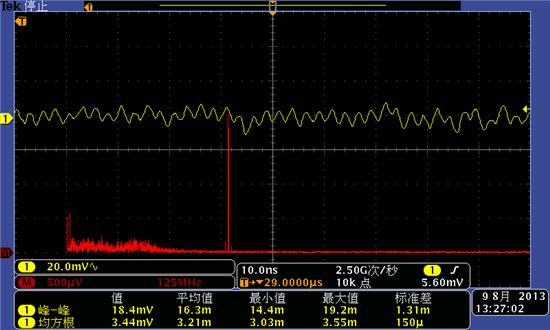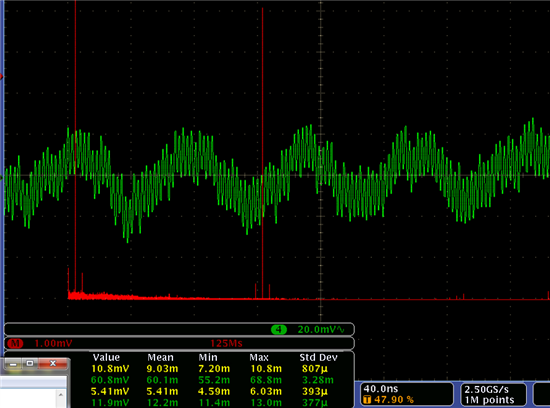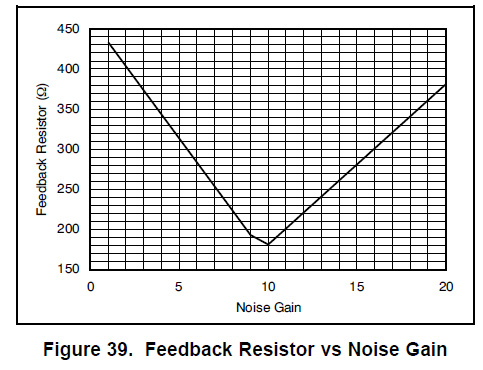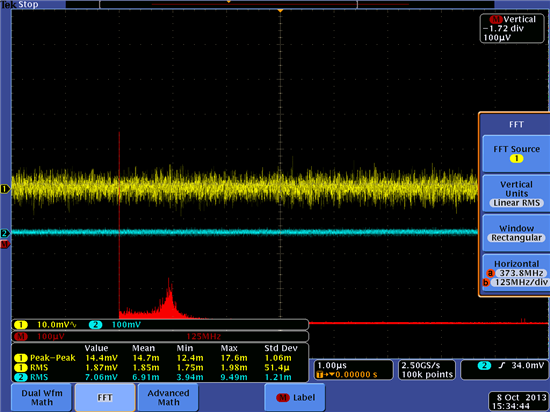Hi, I'm building a simple pre-amp but with pretty high BW, ~ 200MHz. Part of the circuit is pretty simple and shown here:
I'm trying to get the noise down. My SPICE shows about 0.5mVrms. I put in a 150ohm to shun the imput to measure the noise.
The problem I have here is that, sometime, I get about 500uVrms noise at the output which is consistent with the simulation. But a lot of times, I'm getting some kind of ringing with an amplitude of about 3mVrms to 5mVrms. The waveform of the ringing looks like this:
The frequency of the ringing is about 400MHz.
My questions are, 1) is it the ringing from amplifier instability; 2) what's the recommendation to get rid of it?
Many thanks in advance,
Jay







